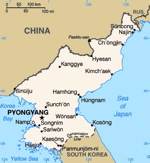Despite several days of intense lobbying, Assistant Secretary of State Christopher Hill, the senior American diplomat for Korean nuclear issues, has apparently been unable to persuade the Democratic People's Republic of Korea (DPRK) to continue its denuclearization process. Instead, events during the past two weeks suggest that Pyongyang is returning to its rogue ways, at least for the time being. Last week, the DPRK ordered the removal of international monitors and their surveillance equipment from its main nuclear facility at Yongbyon. This week, the North Korean government has begun taking nuclear equipment out of storage and returning it to the site. There is also evidence that the DPRK is planning to resume testing a long-range ballistic missile that might have sufficient range to attack targets in the United States. Only two months ago, North Korea appeared to be making progress in rolling back its nuclear program. On June 27, 2008, DPRK officials turned the destruction of the cooling tower at Yongbyon into a genuine media event (charging attending journalists accordingly). The previous day, DPRK authorities delivered their long-anticipated declaration of Pyongyang's past nuclear activities to the other five participants of the Six-Party Talks negotiating Korea's denuclearization. (The talks include China, Japan, Russia, and South Korea as well as the DPRK and the United States.)
Global Insights: North Korean Denuclearization Stalls Again

